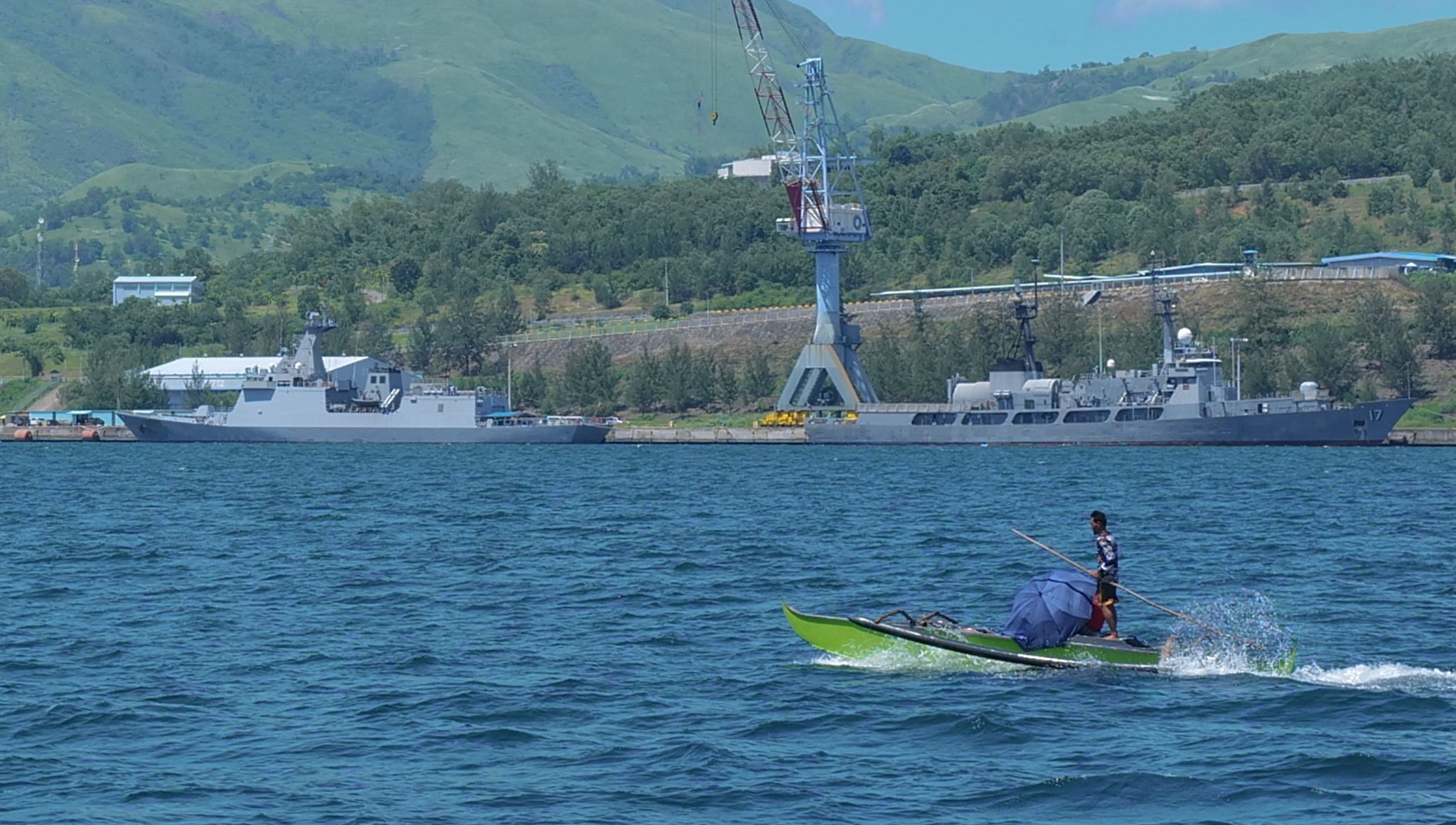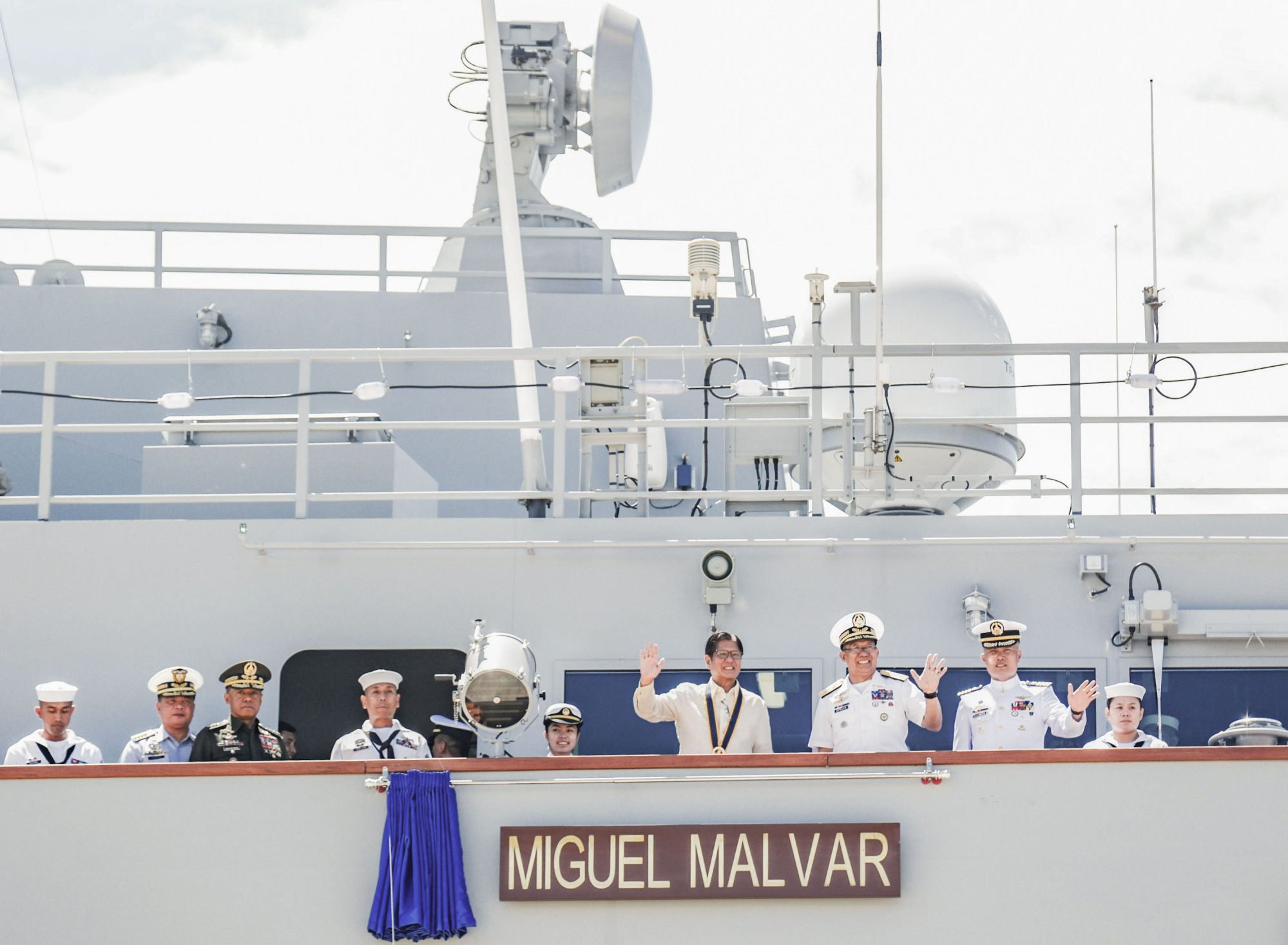Philippine navy adds bases in Subic Bay, Mindanao amid South China Sea tensions
The bases are expected to help grow the Philippines’ infrastructure as it acquires more warships for its arsenal

The Philippine Navy is set to open a series of naval bases as it bolsters its modernisation efforts, with one of the facilities near a former American military stronghold raising the potential of further sites added to those under an existing deal allowing US forces to train on Philippine soil.
Observers also note that the plan showcases Manila’s willingness to expand the defence reach of its navy amid increasingly volatile territorial rows in the South China Sea, as well as reduce reliance on South Korean shipbuilders by developing local shipyards.
President Ferdinand Marcos Jnr confirmed at the Navy’s 127th anniversary ceremony on Tuesday that his government was “investing in responsive and up-to-date assets and systems to ensure that our navy remains a formidable force in the region”.
The move is seen as part of the Philippine Armed Forces’ modernisation programme. It is currently in its Horizon 3 phase, which started last year and will last for another 10 years.
Marcos said they would soon be breaking ground at Naval Station Nabasan, an existing wharf located near the mouth of Subic Bay.

The navy is also expanding its footprint to the nearby Grande and Chiquita Islands. Both are part of Subic Bay, a 670 sq km (260 sq miles) area which was a former US naval base until the Philippines rejected its lease extension in 1991.
American forces pulled out of the area a year later. However, it continues to be an essential venue for military support, with Philippine and American forces using the area for resupplying, refuelling and repairing vessels. Subic’s port facilities are also used to take delivery of US military equipment into the Philippines during its Balikatan exercises.
The US Navy said it was considering the area as a location to preposition Marine Corps equipment, and is looking to lease a storage facility within 100km (62 miles) of Subic Bay by next year.
“More than just acquiring new equipment, this modernisation is also about empowering the Philippine Navy with the necessary skills, knowledge, tools and sustainment that would safeguard our nation’s interest,” Marcos said.
The president also confirmed establishing a naval support base in Misamis Oriental province, located on Mindanao island in southern Philippines, to free up the airbase in Cavite just 12km (7.5 miles) south of Manila, which currently hosts an airfield and vessel repair facilities.
Observers said the announced bases in Subic Bay and Misamis Oriental were part of plans to grow the infrastructure to support the navy’s acquisitions of military equipment.
“New naval bases in Nabasan Station in Subic Bay and Misamis Oriental in Mindanao is a proof of concept of territorial defence operation and the willingness of the navy to expand their bases to big requirements needed for external security of the country,” Chester Cabalza, founder and president of the think tank International Development and Security Cooperation, told This Week in Asia.
“As the champions of maritime rules-based order, larger naval bases are needed for berthing needs for the newest addition of warships in our arsenal,” he said.
In April, the Philippine Navy received the BRP Miguel Malvar, one of two guided-missile corvettes it acquired from South Korea.
Equipped with a vertical launch system for neutralising air threats, the corvette is part of a 28-billion-peso (US$503-million) contract awarded to Hyundai in 2021 through the Navy’s Corvette Acquisition Program.
Vincent Kyle Parada, a former defence analyst for the Philippine Navy and graduate student at the S. Rajaratnam School of International Studies, said that the navy was expecting several larger platforms by the end of 2028.
“As the country expands its naval fleet, it needs the infrastructure to support them – places to dock, conduct repairs, et cetera. Existing facilities in Manila and Cavite aren’t really equipped to handle the logistical requirements of these new assets,” he told This Week in Asia.
The bases would also help reduce the navy’s reliance on South Korean shipbuilders. “It’s something they’ve been working on for a while now so newer warships no longer had to travel abroad for routine maintenance, thereby reducing time spent at sea and maximising their operational lifespan,” he added.
EDCA expansion?
Currently administered by the Subic Bay Metropolitan Authority as a free port zone, Subic Bay was not part of the expanded list of sites that American forces could operate from under the Enhanced Defence Cooperation Agreement (EDCA) that Marcos announced in 2023.
Analysts say that while adding Subic Bay to the list of EDCA sites is unlikely after the conversion, the Philippines can still accommodate American forces on the naval base.
“There’s too many parallels with the US bases of old, the adverse environmental and social effects of which are still felt today. There’s a political cost there that’ll inevitably lead to blowback from progressive groups,” Parada said.
Subic’s strategic location was needed “to protect new vessels responsive to the demands in the West Philippine Sea from Scarborough Shoal in Zambales down to the Spratly Islands in Palawan”, Cabalza said.

Meanwhile, the planned naval base in Mindanao would “cover the latest developments in the back door of the country,” Cabalza said. “This will help in the border control with the busy sea lanes in Sulu-Sulawesi seas, the internal territorial waters around the Muslim-dominated [Bangsamoro], and Chinese laden influx of submersible drones seen in Mindanao.”
It would also enable Manila to adhere to its maritime security commitments beyond the South China Sea – such as coordinating patrols in the Sulu-Sulawesi Seas as part of the Trilateral Cooperative Arrangement with Indonesia and Malaysia.
“Sibutu Passage has also been a transit point for Chinese warships, as was the case for Task Group 107 en route to the Tasman Sea,” he said, referring to the People’s Liberation Army task group that was found sailing near Australia’s exclusive economic zone in February.
“As an archipelagic nation, the Philippines needs to be able to project and sustain force over its expansive maritime domain … Having a new naval station in Misamis Oriental means that it can more effectively do so in the waters around Mindanao.”